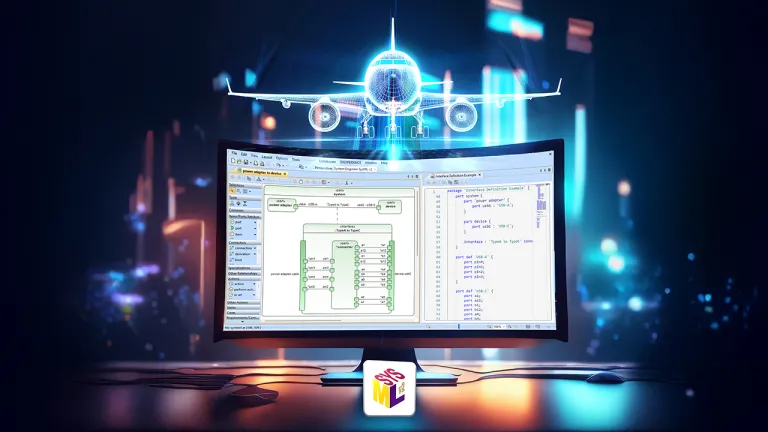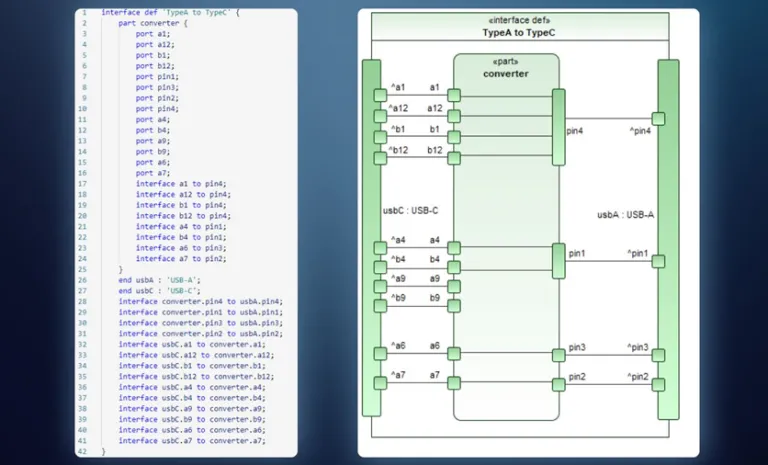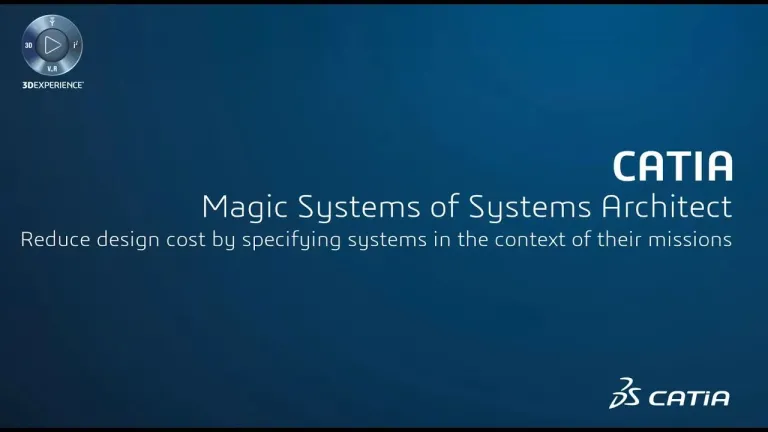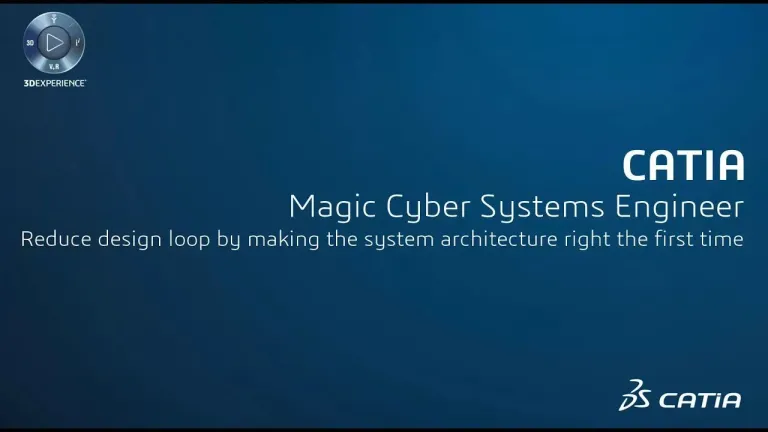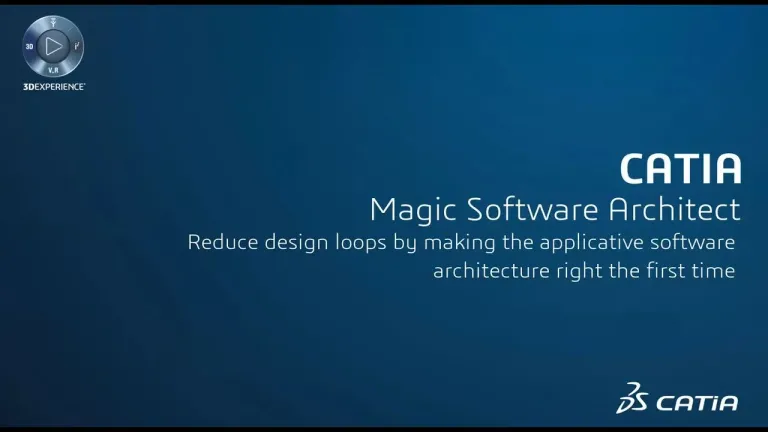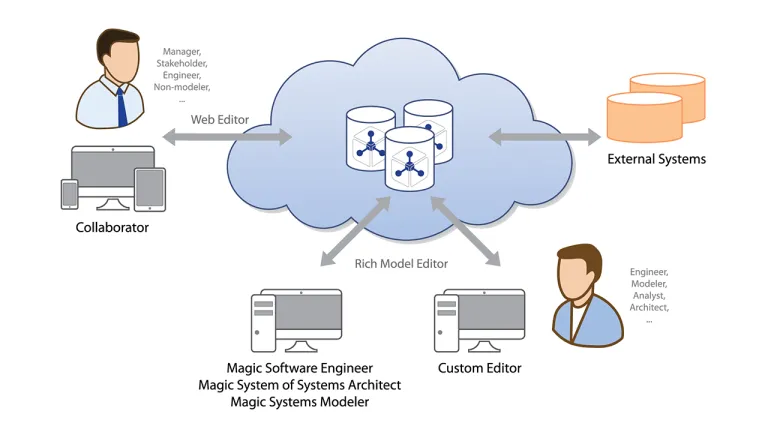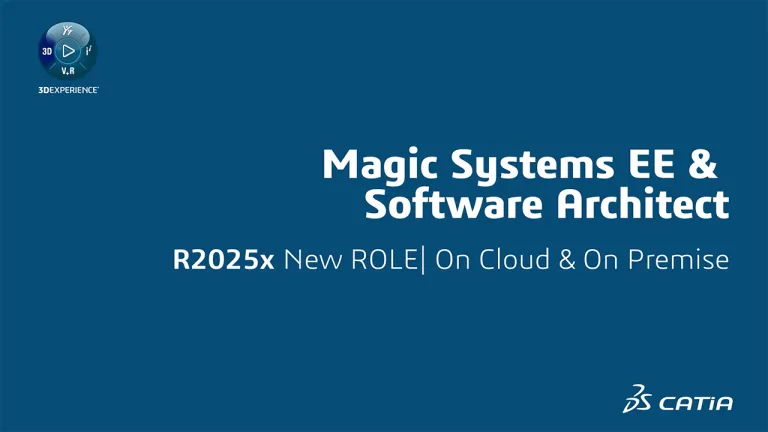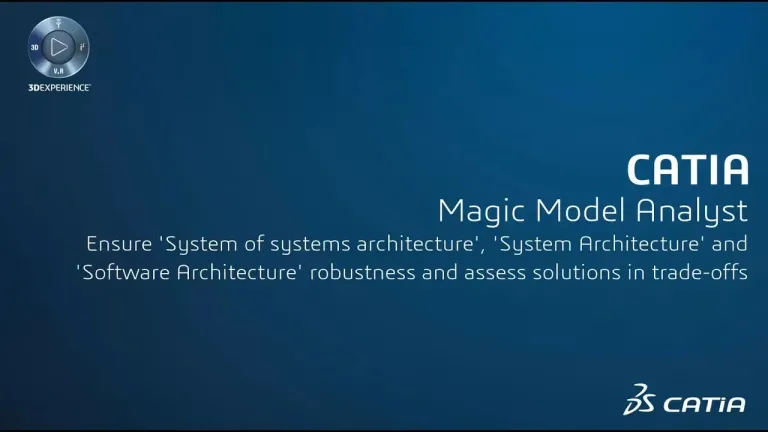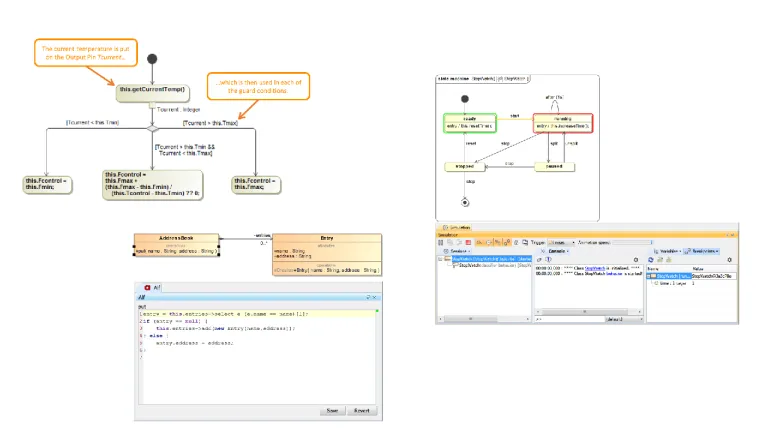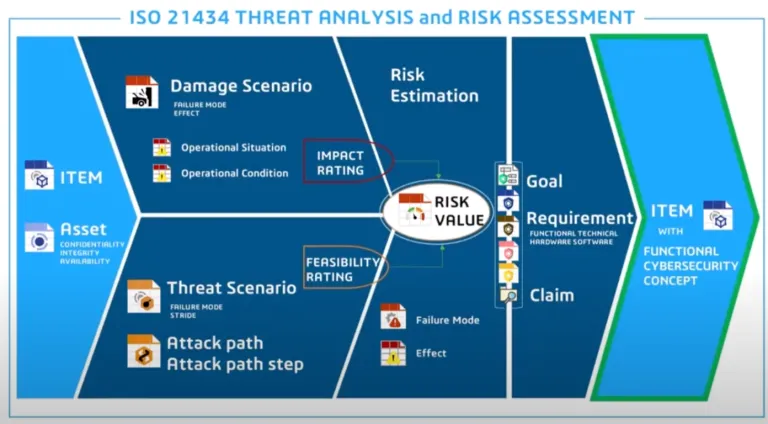CATIA Magic
Global Model-Based Systems Engineering Solutions
Next Gen Systems Engineering Solutions
In 2018, Dassault Systèmes completed the acquisition of No Magic (the leader in model-based systems engineering, and modeling solutions for software architecture and business processes) to strengthen its foothold in Systems Engineering and in order to facilitate new connected experiences. The acquisition of No Magic also reinforces Dassault Systèmes’ industry solution experiences based on the 3DEXPERIENCE platform.
Dassault Systèmes’ is now able to generalize systems engineering to develop the “Internet of Experiences” – the smart and autonomous experiences which are digitally connecting products, nature and life in the physical world. The No Magic solutions are integrated on the 3DEXPERIENCE platform to develop a best-in-class Model-based System Engineering and System of Systems Engineering Solution and Offering called CATIA Magic.
The CATIA Magic solutions are the most robust and standards-compliant solutions in the market.
Discover CATIA SysML v2 Early Experience Program
Through the Early Experience Program, participants gain early access to the implementation of the OMG SysML v2 standard across the CATIA Magic and No Magic (Cameo) product lines and alongside SysML v1.
- 100% Standard Conformance to the OMG SysML v2 specification metamodel
- Synchronized Textual and Graphical Authoring
- Extensibility and Customization adaptable to meet unique user needs
- SysML v2 REST API Integration to enhance interoperability
- Model evaluation
To join the CATIA SysML v2 Early Experience Program
- Install CATIA Magic/No Magic 2024x Refresh2 Desktop Client
- The designated Point of Contact (POC) from your organization should contact CATIA.EMEAR.sysml2-eep@3ds.com
SysML v2 Solution
Text and Diagrams in Perfect Sync. Deliver seamless two-way synchronization between textual and graphical SysML v2 model representations.
- Instant consistency – changes in text or diagrams are immediately reflected in both views.
- Dual approach – textual syntax appeals to software developers, while diagrams provide clarity for complex system architectures.
- Unique capability – currently the only solution supporting 100% of the SysML v2 standard with true two-way synchronization.
The early release of SysML v2 capabilities by Dassault Systèmes is a significant step forward for MBSE adoption across industries. It empowers our users to explore the full potential of this next-generation standard, test its application in their workflows, and strategically plan for a smooth transition
Empowering Your Business Challenges With Our Products
We offer a brought set of roles to tackle your business challenges.
- Magic Systems of Systems Architect
- Magic Cyber Systems Engineer
- Magic Software Architect
- Magic Collaboration Studio
Magic Systems of Systems Architect
With the deep experience on DoDAF 2.0, MODAF, NAF 3 and UAF, the ‘Magic System of Systems Architect’ product offers the most robust standards compliant DoDAF 2.0, MODAF, NAF 3, NAF 4, and UAF 1.3 via a UAF standardized solution.
The ‘Magic System of Systems Architect’ fully supports all the architectural framework products ensuring you achieve project results. ‘Magic System of Systems Architect’ also leads the industry in its integration in systems of systems engineering, ensuring that you achieve net-centric success. Meet your interoperability challenges with proven, tested CATIA Magic solutions.
Magic Cyber-Systems Engineer
The ‘Magic Cyber-Systems Engineer’ product is an industry leading cross-platform collaborative Model-Based Systems Engineering (MBSE) environment. It provides smart, robust, and intuitive tools to define, track, and visualize all aspects of systems in the most standard-compliant SysML models and diagrams. The environment enables systems engineers to:
- Run engineering analysis for design decisions evaluation and requirements verification.
- Continuously check model consistency.
- Track design progress with metrics.
System models can be managed in remote repositories, stored as standard XMI files, or published to documents, images, and web views to address different stakeholder concerns.
Key Benefits
- Understand the problem.
- Develop standard-based System Architecture to Improve communication and buy-in.
- Make decisions on system configurations compliant with the operational needs.
- Deliver consistent and complete specification of the system including its interfaces.
- Automatically verify system requirements.
Magic Software Architect
The Magic Software Architect product is an industry leading, cross-platform, collaborative software architecture engineering product, which provides smart, robust, and intuitive tools to define, track, and visualize all aspects of software and related system architecture using the most standard-compliant UML models and diagrams. This dynamic and versatile development tool facilitates analysis and design of Object Oriented (OO) systems and databases. It provides the industry's best code engineering mechanism (with full round-trip support for Java, C++ and CORBA IDL programming languages), as well as database schema modeling, DDL generation and reverse engineering facilities.
Key Benefits
- Industry standards-compliance and support.
- Independence from specific development methodology.
- Usability, intuitiveness and quick start.
- Extensibility.
- Collaboration and team development.
Magic Collaboration Studio
The Magic Collaboration Studio product is for collaborative development and version model storage for large volume of data. It is architected to provide state-of-the-art model-governance (merging, branching, access control with secured connection), model analysis and integration with third-party tools. Magic Collaboration Studio works along with Magic Systems of Systems Architect, Magic Cyber-Systems Engineer and Magic Software Architect.
Key Benefits
- Ensure seamless large scale system of systems/system/software architecture definition with distributed teams.
- Provide digital collaboration on the architectures among stakeholders by enabling parallel modeling.
- Supports users work on-line and off-line.
- Track and review modifications on published architectures on the web.
CATIA Magic Solutions
Expand CATIA Magic capabilities with Magic Model Analyst, Magic Real-Time Communication Designer and Magic Alf Analyst
- Magic Systems EE & Software Architect
- Magic Model Analyst
- Magic Real-Time Communication Designer
- Magic Alf Analyst
- Cybersecurity role
Define Software Components Allocated to Hardware Architecture: Compose a hardware architecture comprised of Sensors, Actuators, and Controllers, connected through embedded communication protocols. The goal is to optimize E/E Architecture and create a Software-defined vehicle platform that can be re-used across vehicle programs.
E/E architecture activities are performed at the vehicle system level, according to four independent scopes of responsibilities:
- Hardware Architecture
- Software Architecture
- Communication Matrices
- System Mapping
This last activity involves making decisions and trade-offs to ensure consistency between hardware and software, taking communication into account.
As a result, EE engineers are able to deliver optimized architectural proposals to each engineering domain to implement the Hardware (electronics), the Software (Embedded SW) and Electrical (detailed schematics).
Magic Model Analyst
The Magic Model Analyst product provides the first in the industry extendable model execution framework based on OMG fUML and W3C SCXML standards. Magic Model Analyst can be used along with Magic Systems of Systems Architect, Magic Cyber-Systems Engineer and Magic Software Architect. It is used to validate system behavior by executing, animating, and debugging models in the context of representative mock-ups of the intended user interface.
The purpose of a simulation is to gain system understanding without manipulating the real system, either because it is not yet defined or available, or because it cannot be accessed directly due to cost, time, resources or risk constraints. Simulation is typically performed on a model of the system. With the Magic Model Analyst product, users can test how the system reacts to user interaction or predefined testing data and execution scenarios.
Key Benefits
- Virtually predict system behavior before deriving requirements to specify with accuracy the solution, in a modeling and simulation approach.
- Analyze the system analysis for completeness, consistency, traceability and contradiction checking, thus preventing rework loops.
- Continuously manage uncertainties and make high level solution trade-offs for early accurate decision making.
Magic Real-Time Communication Designer
Model-Based System Engineering (MBSE) and SysML tools are becoming more sophisticated in order to support the increased complexity of embedded and distributed applications. These new systems are larger, contain autonomous components, operate from the edge to the cloud, and often have strict requirements in terms of performance, scalability, robustness and security.
Two standards - SysML and Data Distribution Service™ (DDS™) - address the necessary end-to-end design requirements for model-based design. SysML defines the requirements of the system itself. DDS addresses the communications requirements between system components running across different computers, including connectivity, security and quality of service (QoS).
Dassault Systemes has addressed the digital continuity and integration between the two worlds of MBSE to interface design with the new Magic Real-Time Communication Designer. This software plugin provides a direct integration to RTI Connext®, the leading commercial software based on the DDS standard, enabling engineers to create model-based systems based on real-time communication flow across embedded and distributed systems. Engineers can go directly from the system model in SysML to RTI Connext for implementation and deployment of a distributed system.
Benefits of this integration include:
- Increased productivity by modeling the DDS-related aspects of a system using SysML extended by a DDS-specific profile and generating the necessary DDS setup code in any of the supported Programming Languages.
- A graphical, unified representation of the overall system from requirements to functional applications, providing engineers with a common view of the system and a single source of (data) truth.
- Integration with RTI Connext to enable graphical design and configuration of all DDS aspects, including Domains, Types, Topics and QoS.
This integration has been specially validated with RTI Connect®, along our partnership with Real-Time Innovations Inc. (RTI).
Watch the webinar to see how to connect MBSE with Interface Design using open standards.
Magic Alf Analyst
Alf (the Action Language for Foundation UML) is a textual language for coding detailed, executable behavior within an overall UML model. Alf is a standard of the Object Management Group (OMG), which is also the organization that maintains the UML specification. Alf is one of a suite of OMG specifications related to defining precise execution semantics for UML, building on the original Foundational UML (fUML) specification.
Key Benefits
- The Magic Alf Analyst allows you to use the Alf language within Magic Model Analyst.
- It provides both a syntax-aware editor for entering and updating Alf code, and a compiler for translating Alf code into fUML activity models.
- Behavioral specifications written using Alf code are fully executable in the context of class, activity and state machine models.
- The Alf Plugin supports the Alf language at the “Full Conformance” level, i.e. it provides a complete action language for representing behavior within a UML model created in the usual way in MagicDraw.
Cyber Systems Engineer and Systems Cybersecurity Designer
How to connect the dots between system engineering, safety and cybersecurity teams? Unleash safety & security by design. Fully embedded in the system model, you can:
- Asset identification
- Damage & Threat scenario identification (STRIDE, UNECE 155 categories)
- Attack Path modeling (with MITRE CWE library included)
- Automated risk computation
- Cybersecurity requirements selection to mitigate identified risks
Compliant with ISO 21434 & ISO 26262 risk assessment processes, you can easily build a cross-analysis to ensure traceability, scalability and consistency to strengthen data capitalization and the product architecture design.
Certified for Automotive Functional Safety Compliance
CATIA Magic (R2024x Refresh 2) has successfully achieved Software Certification in accordance with internationally recognized automotive safety standards. Following a rigorous assessment process, our software solutions have been found to comply with the requirements of ISO 26262-8:2018 (Section 11), achieving Tool Confidence Level 2 (TCL2). This certification confirms that CATIA Magic meets the necessary criteria to support safety-critical design and development processes in the automotive industry. This certification ensures that the use of CATIA Magic in safety-related development activities complies with ISO 26262, reinforcing Dassault Systèmes' commitment to ensuring safe, reliable and innovative engineering.
Expert Consulting and Tailored Training Services
CATIA Magic consulting provides expert thought-leadership in the areas of systems modeling and simulation as well as knowledge transfer based on a detailed analysis of customer work products and processes. Consulting services are provided on-site or remotely based on the issues involved and arrangements with the customer.
CATIA Magic training can be customized and adapted to our clients' specific modeling, simulation, and analysis needs, combining theory and practical application.
It provides companies with the foundation they need to quickly jump-start their learning by learning modeling languages, tools, and methodologies.
Join the conversation in the CATIA MBSE Cyber System User Community!
CATIA MAGIC FAQs
Also Discover
Learn What CATIA Can Do for You
Speak with a CATIA expert to learn how our solutions enable seamless collaboration and sustainable innovation at organizations of every size.
Get Started
Courses and classes are available for students, academia, professionals and companies. Find the right CATIA training for you.
Get Help
Find information on software & hardware certification, software downloads, user documentation, support contact and services offering

